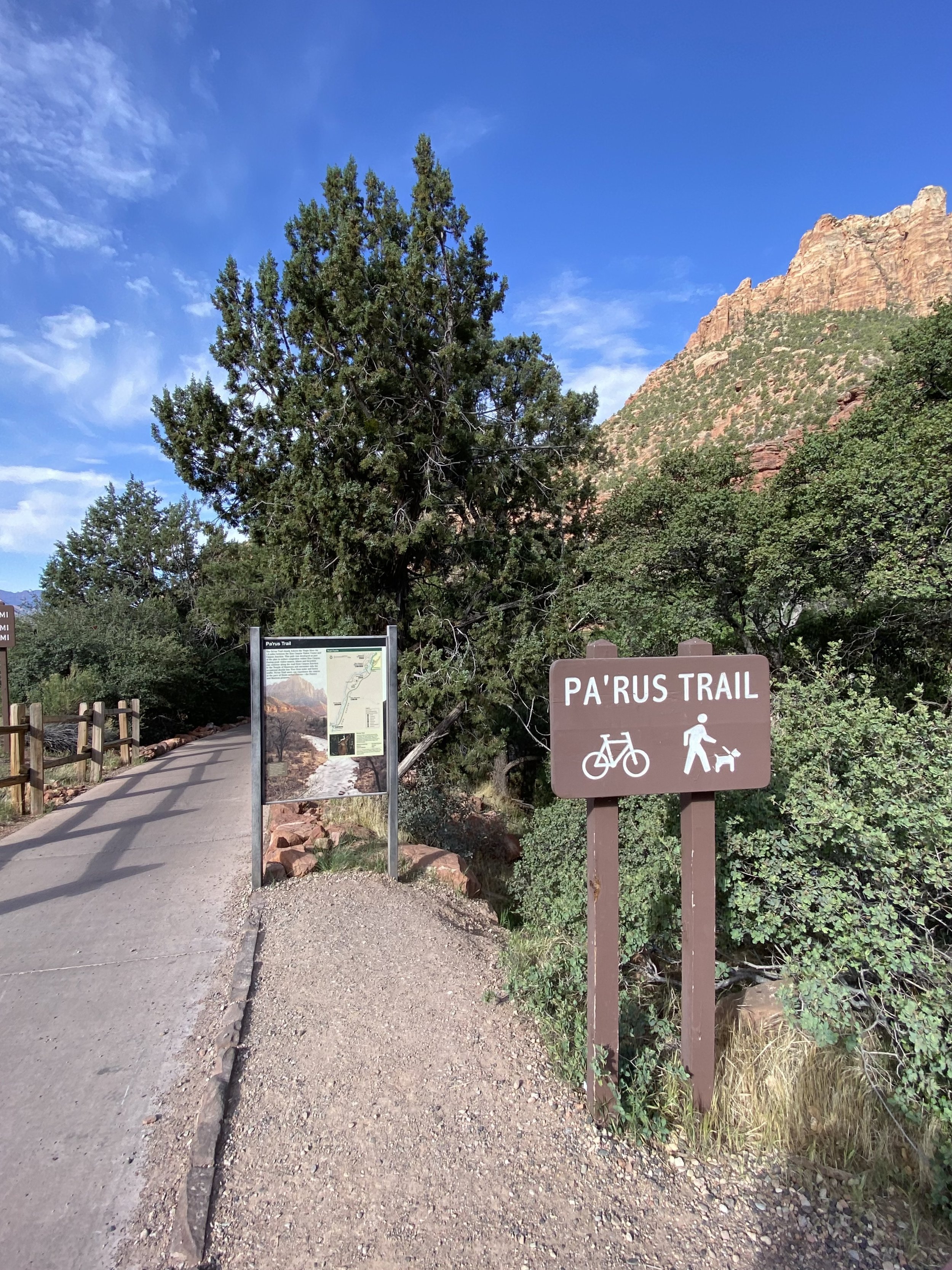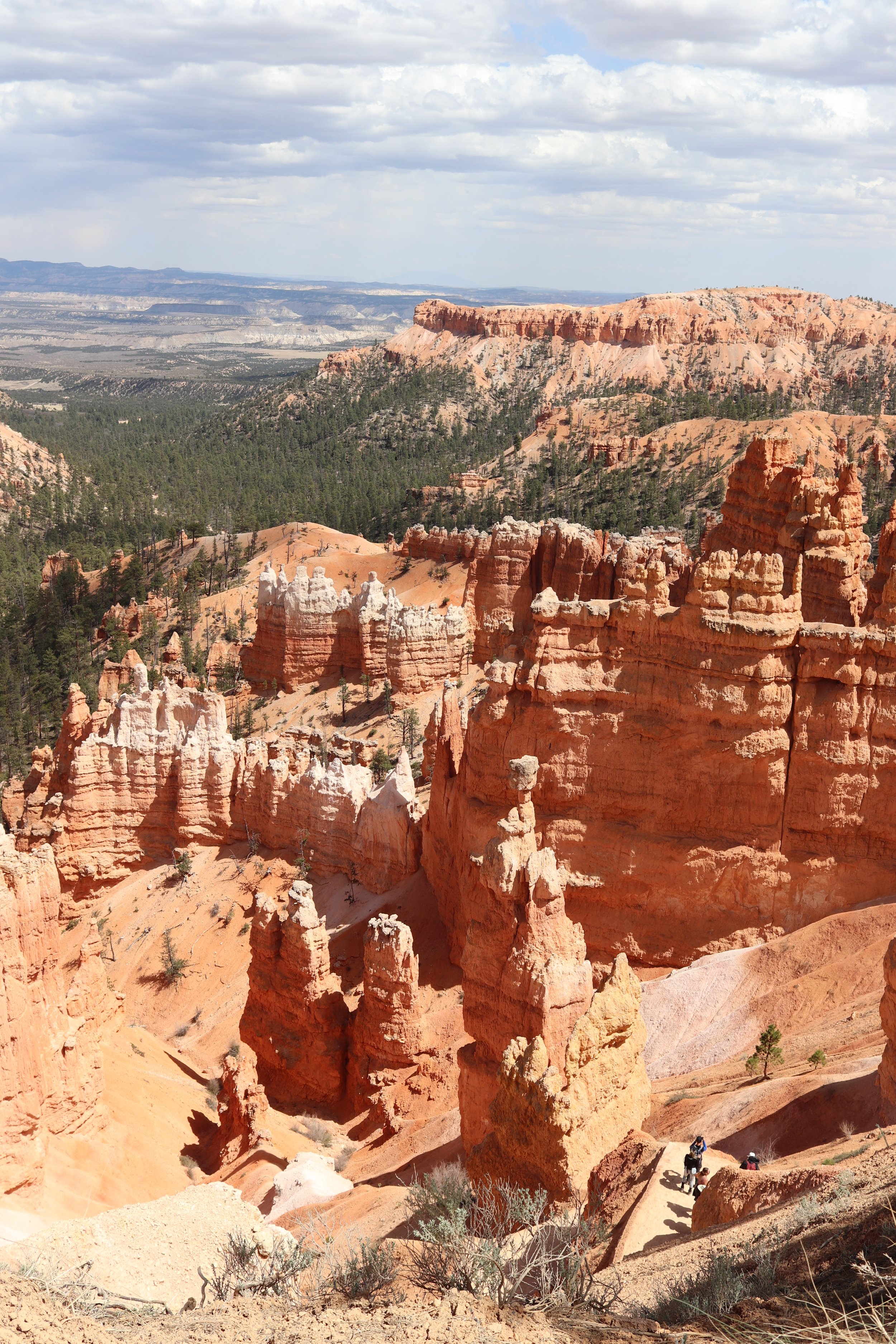Visiting Zion and Bryce Canyon National Parks with Your Dog
In Southern Utah, near St. George, you can find two beautiful National Parks just an hour away from one another - Zion and Bryce Canyon.
Zion National Park, Utah’s first National Park, is a nature preserve distinguished by Zion Canyon’s steep red cliffs. It encompasses some of the most scenic canyon country in the United States with 232 square miles of high plateaus, a maze of narrow, deep, sandstone canyons, and the Virgin River and its tributaries.
Bryce Canyon is known for its crimson-colored hoodoos, which are spire-shaped rock formations, and is actually famous for having the largest collection of hoodoos in the world.
There is a fee to enter each park and if you plan to visit both we highly recommend getting a National Parks Pass. It pays for itself with just a few parks visits a year!
Like all National Parks, Zion and Bryce Canyon need to protect their ecosystems and wildlife, as well as manage a lot of visitation. There are places that your dog will not be allowed, however, as long as you follow some simple rules, you and your dog can still see some of the highlights of these beautiful parks.
RULES WHEN TRAVELING WITH YOUR DOG TO NATIONAL PARKS
Pets are allowed in developed areas such as: in your cars while driving park roads, frontcountry campgrounds, picnic areas, along roads when you are stopped, in parking areas, and in boats on lakes where motorized watercraft are permitted.
Pets are not permitted on trails, along lake shores outside of developed locations, in the backcountry, or in any building.
Pets must be on a leash no longer than 6 feet (1.8 m), under physical restraint, or caged at all times, including while in open-bed pickup trucks.
Pets are not to be left tied to an object when unattended.
Pet owners must pick up after their pets and dispose of waste in a trash receptacle. Owners must not allow a pet to make noise that is unreasonable. When the bike path between Apgar and West Glacier is free of snow dogs are allowed on leash.
When roads are closed to vehicle traffic, they are considered a backcountry trail and dogs are not allowed.
General dog rules:
Don’t leave your dog unattended.
Clean up after them. Carry poop bags and throw your pet’s bagged waste into the trash.
Be alert for wildlife.
Now that we’ve got all the rules out of the way, let’s dive into all the dog friendly things there are to do in Zion and Bryce Canyon National Park.
DOG FRIENDLY ACTIVITIES IN ZION NATIONAL PARK
When visiting Zion National Park, plan 3- to 4-hours for exploring with your pup to see all the dog friendly highlights. Remember that your dog must be restrained on a leash no longer than 6 feet and they are only allowed on one trail in the park.
Hike Pa’rus Trail
Pa’rus Trail is the only trail in Zion National Park that allows dogs. It’s a paved path that starts at the Zion Canyon Visitor Center and runs for 3.4 miles out and back along the Virgin River. The trail features footbridges, meadows, and spectacular vistas of the gorge's features with signs along the way pointing out key park features and history.
What time you get to the park and start exploring will depend on the time of year you visit and your plan for the day. We visited in May (busy season) and knew parking lots were filling up by 9am, so we made it to the park entrance at 7:30am for the gate opening at 8am to get a spot near the visitor center. This also ensured we beat the afternoon heat.
This National Park trail is one of our favorite dog friendly paths. It’s a decent distance to make the visit worthwhile and the surrounding landscape really gives you a feel for the park and views of the geology. There’s a mix of shade along the way with some trees near the river and from the surrounding canyons.
This trail is a bike path, so stay alert, and cuts by a campground. Do not let your pup in the river unless you hear it is safe. When we visited there were several rangers warning against the water due to toxins.
Drive the Scenic Road
Zion Canyon Scenic Drive on Hwy 9 is the major road providing access to Zion National Park. It winds past the park visitor center and museum, and past many famous Zion landmarks. It provides access to Zion Canyon and then goes through the park's mile-long tunnel. It cuts through the park's Checkerboard Mesa area and then ends at Hwy 89 at Mt Carmel Junction.
You can drive this byway as part of a loop, circling north and returning via Hwy 14 over Cedar Mountain, or circling south and returning via Hwy 89 through Kanab and Fredonia, and then Hwy 389 through Colorado City to Hurricane. Or, if you time your day just right, you can drive through the back country of Zion and take Hwy 89 into Bryce Canyon and enjoy both parks in one day. If you choose this plan, the drive will take you about an hour and a half and has amazing views.
Since there are not a lot of dog friendly activities in Zion National Park, we recommend also exploring surrounding area state parks to experience more of the Zion geology in the area. Check out Snow Canyon and Sands Hallow State Park. If you visit in the summer, you’ll want to go early. There is no shade at these parks and it will get HOT.
DOG FRIENDLY ACTIVITIES IN BRYCE CANYON NATIONAL PARK
When visiting Bryce Canyon National Park, plan 3- to 4-hours for exploring with your pup to see all the dog friendly highlights. I think we ended up spending a little more time here than Zion because I couldn’t stop taking pictures of all the hoodoos.
Dogs are only allowed on paved surfaces, including park roads and campgrounds, the Shared-use Path, paved viewpoints (all viewpoints except Piracy Point), and the 1/2 mile section of Rim Trail between Sunset and Sunrise Points. So, with that in mind here are the highlights to hit.
Drive the Scenic Road
Bryce Canyon has one main 18-mile road that runs north-south through the park. The first 3-miles of the road are the stretch to prioritize and stop at every viewpoint to see Bryce Amphitheater, a hoodoo-filled depression lying below the Rim Trail hiking path, from all angles.
From the visitor center, head to your furthest lookout Bryce Point and then work your way back to the entrance. This is the most convenient way to head back towards St. George at the end of the day.
Bryce Point
Bryce Point is one of the most scenic vistas with views of the full amphitheater at an elevation of 8300. The overlook itself is lined with fencing and parts of the paved path have log fencing. This means you’ll need to lift your furry friend if you want to get an unobstructed view for pictures.
The point and the canyon are named after Ebenezer Bryce, who settled in the valley just below the canyon in 1870. Bryce was a shipbuilder who journeyed west with Brigham Young and the Mormon pioneers to assist in the construction of building essentials for community life throughout the new land. Bryce lived here for only five years, but in that time, the canyon became known as Bryce's canyon to the people who knew him.
Inspiration Point
The viewpoint at Inspiration Point is at an elevation of 8100 and consists of three levels that provide varied perspectives of the main amphitheater. From here, visitors look toward the Silent City (near Sunset Point) with its many rows of seemingly frozen hoodoos set against the backdrop of Boat Mesa.
Sunset Point
Sunset Point offers vistas of some of the most famous Bryce Canyon hoodoos. Directly below the point and to the south, you’ll see a maze of hoodoos and fins packed in tight formation. Below on the northern edge, Thor's Hammer can be found striking in form due to its isolation from other hoodoos, and a favorite among visitors.
Sunrise Point
Sunrise Point is the northernmost of the four major viewpoints that overlook the iconic Bryce Amphitheater. Though this point along with Sunset Point was named to entice early Lodge visitors to easily accessible points along the rim at both times of day, this view is said to be equally good at sunrise and sunset. Here you can clearly see the full process of hoodoo formation as the plateau rim erodes back exposing walls or fins of layered rock, which are then broken by frost-wedging with windows (arches) that expand to eventually form the isolated columns of stone known as hoodoos.
Hike the Rim Trail
The Rim Trail overlooks the entire Bryce Canyon National Park amphitheater. The section between Sunrise and Sunset Points is paved and is wheelchair accessible except in severe weather. This is the only section of the Rim Trail dogs are allowed on and they must be on leash and owners must pick up after them. This trail is only fenced at the viewpoints, so keep your pups close as you walk along the rim.
This section of the trail is about .9 miles and shouldn't take more than 40 minutes if you take your time, which you’re going to want to because this stretch has spectacular views of the hoodoos.
Keep an eye out for horses on the trail too. There is a part towards Sunrise Point where a tour horse trail crosses the walking trail.
If you have time to explore the area when visiting Bryce Canyon, you can check out these dog friendly trails or trails at Red Canyon, like Photo Trail and Eagle’s Eye Trail, to get more up close and personal with hoodoos.




















